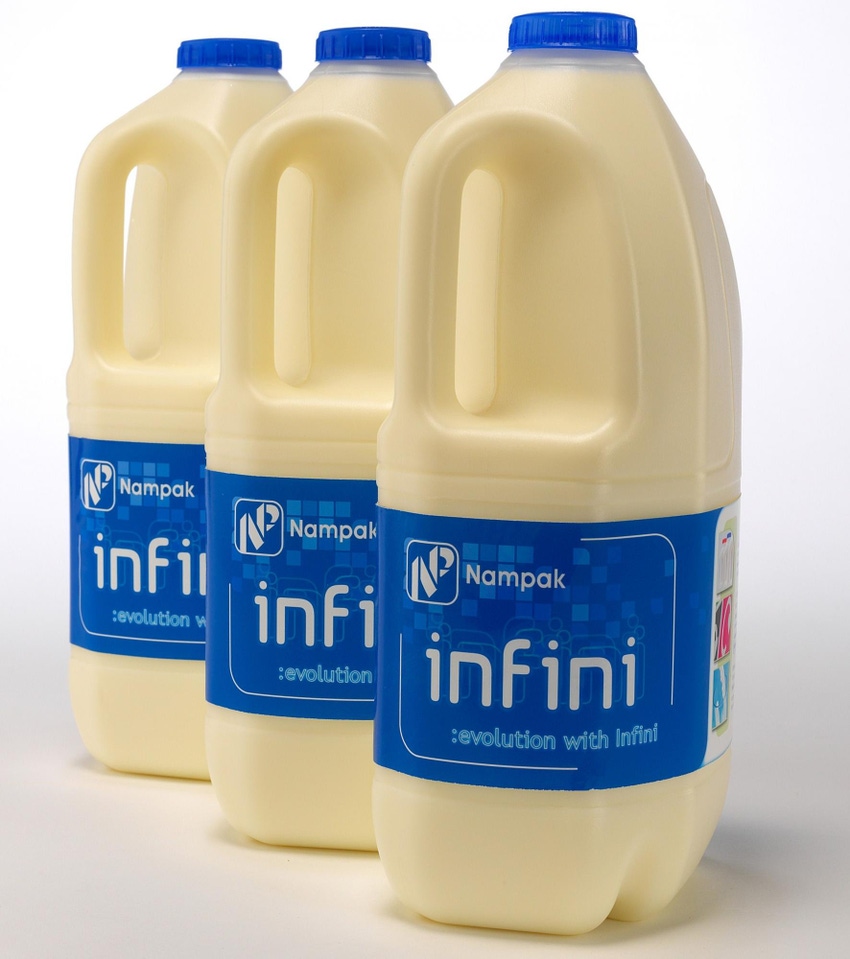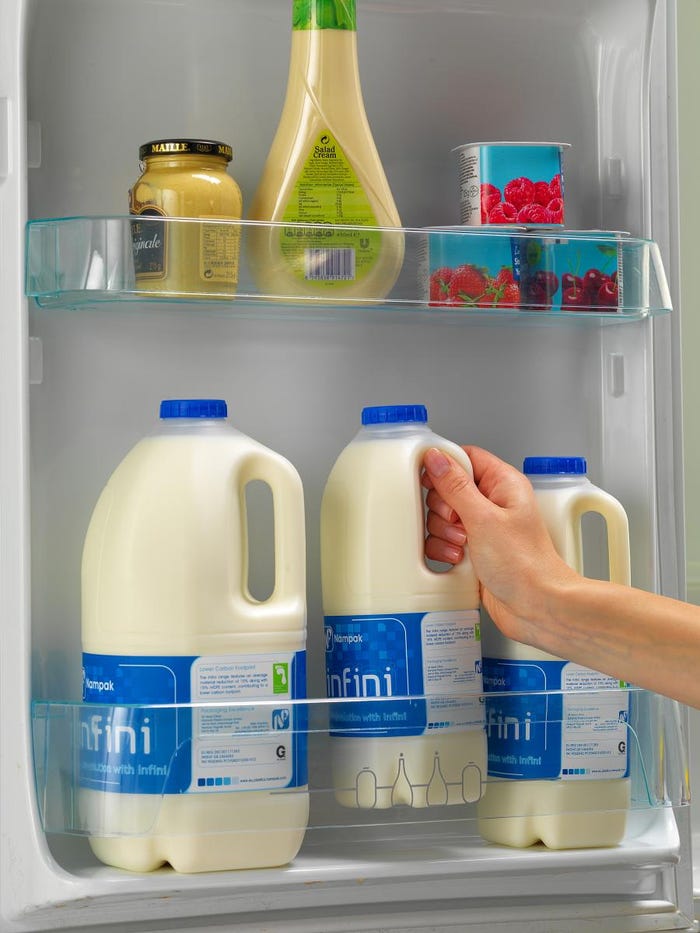Nampak Plastics looks to lightweight the milk industry
Nampak Plastics, a UK producer of plastic milk bottles, says it has created the world's lightest four-pint high density polyethylene (HDPE) bottle.The bottle, which comes in a 32g four-pint, represents a 20% material savings on the standard four-pint version found in most supermarkets today, which weigh about 40g, according to Nampak. This lightweight bottle is currently undergoing trials with a number of Nampak's customers.
February 21, 2013

Nampak Plastics, a UK producer of plastic milk bottles, says it has created the world's lightest four-pint high density polyethylene (HDPE) bottle.
The bottle, which comes in a 32g four-pint, represents a 20% material savings on the standard four-pint version found in most supermarkets today, which weigh about 40g, according to Nampak. This lightweight bottle is currently undergoing trials with a number of Nampak's customers.
 This recent advancement is the latest incarnation of Nampak's Infini bottle, which was officially launched in 2012 after four years of collaborative efforts from the Nampak team and following extensive trials, tests and market research. The Infini bottle claimed a World Star prize earlier this year and the Best Dairy Packaging Innovation at the Global Dairy Congress in 2012.
This recent advancement is the latest incarnation of Nampak's Infini bottle, which was officially launched in 2012 after four years of collaborative efforts from the Nampak team and following extensive trials, tests and market research. The Infini bottle claimed a World Star prize earlier this year and the Best Dairy Packaging Innovation at the Global Dairy Congress in 2012.
The company says if the 32g four-pint bottle was to become the industry standard, it would reduce the overall amount of resin used in UK milk packaging by 30,000 tons.
Milk packaging has clearly evolved from its early days of milk pails and glass bottles. In fact, last November was the 30th anniversary of the four-pint HDPE bottle, the last time a major change in the design of milk packaging took place. Now the plastic milk bottle is one of the most used items in the UK, with approximately four billion bottles purchased every year.
Ashwin Moorthy, head of engineering and innovation at Nampak Plastics, told PlasticsToday that HDPE milk packaging has evolved in terms of being increasingly "fit for purpose" in the supply chain. Consumers have shifted toward plastic bottles over other types of packaging due to its convenience and usability, Moorthy said.
Still, after HPDE milk packaging became the standard, there was little development in innovation until now where retailers are under an increasing amount of pressure to cut waste. Waste reduction targets set for retailers under the Courtauld Commitment and the Dairy Roadmap states that milk packaging must use 30% of rHDPE by 2015 and 50% rHDPE by 2020.
Moorthy said Nampak has been lightweighting its packaging on average by up to 25% with the Infini bottle. Blowmolding processing trials are already underway to determine the feasibility of incorporating 30% and 50% rHDPE in the company's milk bottles.
Still, lightweighting isn't an easy feat and Moorthy said that throughout the Infini development process, they have faced huge challenges. In the past, lightweighting has been achieved by simply using less material, but there is a limit to how thin the walls can be for the bottle to still be suitable for its intended purpose. Extensive research and testing was conducted, and innovative design changes were made with a particular focus on minimizing stretching by bringing corners closer together.
huge challenges. In the past, lightweighting has been achieved by simply using less material, but there is a limit to how thin the walls can be for the bottle to still be suitable for its intended purpose. Extensive research and testing was conducted, and innovative design changes were made with a particular focus on minimizing stretching by bringing corners closer together.
"When looking at lightweighting it is important that we do not forget the packaging fundamental principles and that the bottle still remains fit for purpose - we see many examples of lighter weight packaging that do not achieve this," Moorthy said.
Nampak believes the Infini bottles provide a robust and modern design for milk packaging in HDPE with a handle. For consumers, Moorthy said an important element of the new design is the positioning of the profiled handle at a corner edge of the bottle. Stored in the fridge door, the handle is positioned facing outwards making it easier for the consumer to remove, grip and pour the contents of the bottle.
"Ideal plastic packaging for milk needs to be as lightweight and sustainable as possible, maximize recycling and carbon saving opportunities, and of course, be convenient and easy to use," Moorthy said. "HDPE rigid lightweight plastic packaging with a handle meets current supply chain and consumer requirements."
While they are focused on prioritizing further rollout of the Infini range in the UK, the company is also exploring Infini licensing opportunities abroad. Moorthy said they are also looking into licensing deals with a number of potential customers outside the dairy sector in the UK and worldwide, who are interested in using the patented Infini design for lightweighting.
In addition, they believe the Infini bottle lends itself to opportunities outside of milk, and are also speaking to retailers about the company's pourable cream bottle design.
"Our recent innovation of the Infini bottle is evidence of our desire to keep pushing boundaries in the dairy industry," Moorthy said. "We believe that Infini is the future and are working hard to make this happen."
About the Author(s)
You May Also Like


